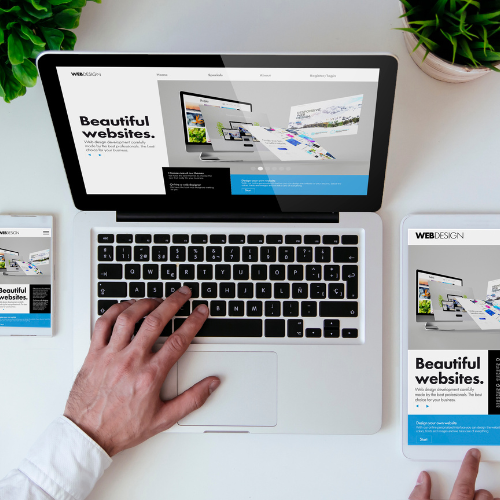In today’s digital age, your website serves as the face of your business. It’s often the first point of contact for potential customers, and first impressions matter. However, many businesses unknowingly make critical errors on their websites that can deter visitors, reduce conversions, and ultimately harm their bottom line. Let’s delve into some of the most common website mistakes and explore how to rectify them. Website
1.
1. Unclear Brand Messaging: The Silent Killer of Online Growth
The Mistake:
One of the most common website mistakes that businesses unknowingly make is having vague or confusing brand messaging. This happens when visitors land on your site and immediately feel lost — they can’t figure out what your business does, who it’s for, or why it matters to them. In a world where users decide within seconds whether to stay or bounce, this is a deal-breaker.
Imagine walking into a store with no signs, no employees to greet you, and no clear indication of what products are being sold. You’d probably walk out, right? That’s exactly what happens when your website fails to communicate your business purpose in a clear and engaging way.
Whether you’re a school like King’s Care Universal School or a digital services agency, if your homepage doesn’t immediately answer the visitor’s top question — “What’s in it for me?” — you’re already losing potential customers.
Why It Matters:
Your website is your 24/7 digital storefront. Clear brand messaging is the bridge between you and your audience. When this bridge is broken:
Visitors bounce quickly – Studies show you have about 3–7 seconds to capture attention.
Your bounce rate increases – Which negatively affects your search engine rankings.
Conversions drop – Confused visitors don’t convert into customers or leads.
You lose credibility – Unclear messaging makes you look unprofessional or untrustworthy.
You blend into the crowd – Without distinct messaging, your site looks like every other generic brand.
In short, unclear messaging doesn’t just confuse your audience — it kills trust, momentum, and revenue.
How to Fix It:
Fixing this common website mistake begins with stepping into the shoes of your ideal visitor. When they land on your site, they’re silently asking:
“What is this?”
“How does this help me?”
“Can I trust this brand?”
“What should I do next?”
Here’s how to make sure your brand answers those questions immediately:
✅ Clarify Your Value Proposition
Your value proposition is the single, compelling reason someone should choose your business over the competition. This should be front and center — ideally as the headline on your homepage.
For example:
“Empowering future leaders through quality, affordable education – right in the heart of Lugbe.”
This statement is:
Specific
Benefit-driven
Emotionally appealing
Unique to your brand
Avoid generic taglines like “We Care About Quality” — they don’t say what you do or how you help.
✅ Use Strategic Headlines and Subheadings
Your page structure should guide visitors. Break text into clear sections with subheadings that speak to their needs:
“What We Offer”
“How We Help You Grow”
“Why Parents Trust Us”
These aren’t just labels — they’re confidence-builders. Your headers are your handshake. Make them count.
✅ Simplify Your Language
Avoid jargon. Speak plainly and humanly. Instead of:
“Our institution facilitates a holistic approach to learner-centric education…”
Say:
“We help children grow academically, socially, and emotionally — all in one nurturing environment.”
The latter is relatable, clear, and warm — exactly how King’s Care Universal School wants to be perceived.
✅ Add Visual Cues
People process visuals 60,000x faster than text. Support your brand message with:
Hero images of your school environment
Happy students and teachers
Infographics that explain your curriculum or impact
Visuals should align with your message. If you claim “modern learning,” show classrooms with tech integration.
✅ Incorporate Testimonials and Proof
Trust is everything online. Show it with:
Testimonials from parents
Achievements (e.g., WAEC performance, alumni success)
Social proof (e.g., “Over 1,000 students enrolled since 2015”)
Real stories make your brand relatable and credible.
✅ Make the Next Step Obvious
After learning about your school or service, what should the visitor do?
Schedule a school tour?
Download a brochure?
Call for more info?
Use clear calls-to-action that align with your message, like:
“Book a School Tour Today”
“Get Our 2025 Admission Guide”
“Speak with Our Academic Counselor”
📌 Bonus Tip: Test Your Messaging With New Eyes
Ask someone unfamiliar with your site to visit your homepage for 10 seconds and describe what your business does. If they struggle, your messaging isn’t clear enough.
2. Weak Calls-to-Action (CTAs)
The Mistake: Your website lacks prominent and persuasive CTAs, leaving visitors unsure of the next steps.
Why It Matters: Without clear CTAs, visitors may not engage further, resulting in missed opportunities for conversions.oostas.com+1hotjar.com+1
How to Fix It: Place noticeable CTAs on each page, guiding visitors towards desired actions like “Contact Us,” “Get a Quote,” or “Subscribe Now.” Use action-oriented language and ensure buttons stand out visually.
3. Cluttered Design
The Mistake: Overloading pages with excessive text, images, and animations, making it hard for visitors to focus.
Why It Matters: A cluttered design can overwhelm visitors, causing them to abandon your site in search of a more user-friendly alternative.
How to Fix It: Adopt a clean, minimalist design. Utilize white space effectively to highlight key content. Prioritize essential information and remove unnecessary elements that distract from your message.
4. Non-Mobile-Friendly Design
The Mistake: Your website isn’t optimized for mobile devices, leading to poor user experiences on smartphones and tablets.
Why It Matters: With a significant portion of web traffic coming from mobile devices, a non-responsive design can alienate a large segment of potential customers.
How to Fix It: Implement responsive design techniques to ensure your site adapts seamlessly to various screen sizes. Test your website on multiple devices to confirm functionality and aesthetics.
5. Slow Loading Speeds
The Mistake: Your website takes too long to load, frustrating visitors and increasing bounce rates.
Why It Matters: Users expect quick access to information. Delays can lead to lost traffic and diminished trust.oostas.com
How to Fix It: Optimize images, leverage browser caching, and minimize the use of heavy scripts. Utilize tools like Google PageSpeed Insights to identify and address performance issues.
6. Lack of SEO Optimization
The Mistake: Your website isn’t optimized for search engines, making it difficult for potential customers to find you online.
Why It Matters: Poor SEO can result in low visibility, reducing organic traffic and potential leads.
How to Fix It: Incorporate relevant keywords naturally into your content, optimize meta tags, and ensure your site structure is search-engine friendly. Regularly update your content to keep it fresh and relevant.
7. Missing Contact Information
The Mistake: Visitors struggle to find your contact details, leading to missed inquiries and opportunities.
Why It Matters: Easy access to contact information builds trust and facilitates communication with potential clients.
How to Fix It: Display your contact information prominently on every page, preferably in the header or footer. Include multiple contact methods, such as phone numbers, email addresses, and physical addresses.
8. Outdated Content
The Mistake: Your website features old or irrelevant information, signaling neglect to visitors.
Why It Matters: Outdated content can harm your credibility and deter potential customers seeking current information.
How to Fix It: Regularly review and update your website content. Remove obsolete information and add fresh, relevant content to engage visitors and improve SEO.
9. Poor Navigation Structure
The Mistake: Visitors find it challenging to navigate your site due to a confusing menu or lack of clear pathways.
Why It Matters: Complicated navigation can frustrate users, leading them to abandon your site in favor of competitors.arxiv.org+6Being Boss+6oostas.com+6
How to Fix It: Design a straightforward navigation menu with clear categories. Use descriptive labels and ensure that important pages are easily accessible within a few clicks.hotjar.com
10. Lack of Analytics Tracking
The Mistake: You’re not monitoring your website’s performance, missing out on valuable insights.
Why It Matters: Without analytics, you can’t assess what’s working or identify areas needing improvement.
How to Fix It: Implement tools like Google Analytics to track visitor behavior, traffic sources, and conversion rates. Use this data to make informed decisions and optimize your website’s performance.
Conclusion
Avoiding these common website mistakes is crucial for enhancing user experience, improving search engine rankings, and driving business growth. Regularly audit your website to identify and address these issues, ensuring your online presence effectively supports your business objectives.
For professional assistance in optimizing your website and avoiding these pitfalls, consider reaching out to phundright.com, experts in creating effective and user-friendly websites.
Note: This article is for informational purposes and does not constitute professional advice. Always consult with a qualified web development professional for your specific needs.




